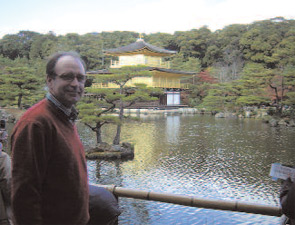
Dutch rheumatologist Piet L. van Riel, MD, PhD, still recalls his resistance in 1980 when he was required to spend time in the rheumatology department as part of his internal medicine training at the Radboud University Medical Centre in Nijmegen, the Netherlands. “I didn’t want to go the rheumatology department,” says Dr. van Riel from his home in Nijmegen. “In fact, in the beginning, I was more interested in becoming a hematologist. I had the idea that rheumatology patients had many complaints and that you couldn’t do a lot to help them – there were no adequate treatments at that time – and so I thought it was not going to be very stimulating there.” What he found was just the opposite: he became interested in the possibilities for clinical research afforded by long-term contact with rheumatology patients.
Until that point, Dr. van Riel had been fully intending to pursue a career in hematology. He had already spent several months at the Royal Marsden Hospital Institute of Cancer Research in London working on cell apheresis during his third year in medical school. “What most attracted me at that time about hematology was that it was a combination of doing research in the laboratory and having clinical contact with patients,” he says. “That was a nice way of combining research and patient care.” As it turns out, Dr. van Riel’s career in rheumatology during the last three decades has interwoven both of those important components, combining clinical and laboratory research and care for patients, and has included collaborations with many of the world’s top researchers.
Mentors and Early Work
Two key people in the rheumatology department at Radboud University catalyzed Dr. van Riel’s initial research efforts in rheumatology: Leo van de Putte, MD, PhD, and Professor Frank W.J. Gribnau MD, PhD. At their invitation, he began work on a randomized clinical trial comparing oral gold versus parenteral gold, which became his PhD thesis.
It was during his work with this study that the idea for what was later to become the Disease Activity Score (DAS) began. To explore a possible correlation between therapeutic response, adverse reactions, and genetic susceptibility, the research team performed HLA typing on the 52 study participants. In the process of defining categorizations for responders and non-responders, Dr. van Riel recalls that his mentor Dr. Gribnau drew his attention to a paper describing the Mallya Index.1
